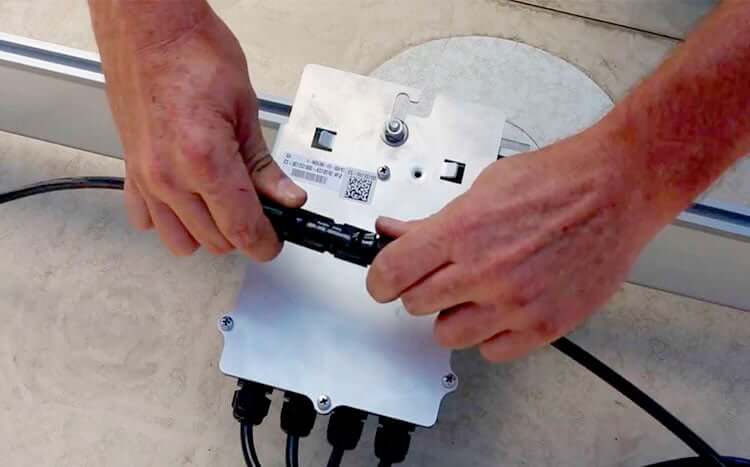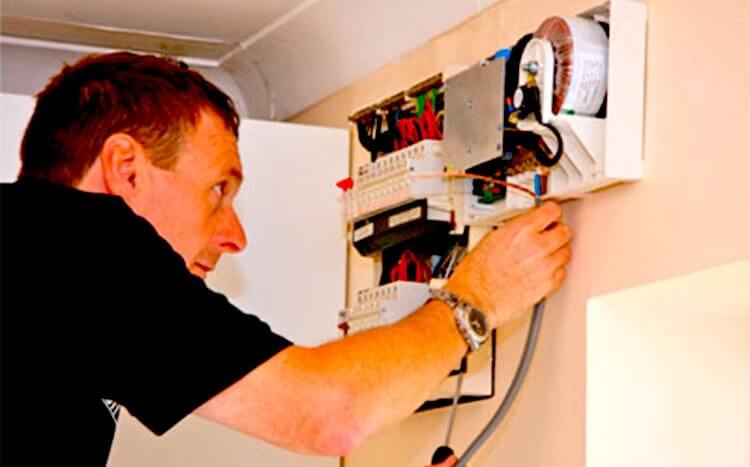Home What does a power optimisers do?
What does a power optimizer do?
If your roof happens to be partially shaded during the day, a power optimiser becomes essential for turning your panels into smart modules, thus increasing the energy production capability of your solar system.
Power optimizers are installed on individual PV solar panels to track individual panels in real time and then regulate their output. They then deliver the energy to a centralized solar inverter that converts the DC energy to AC energy used for commercial and residential purposes.
Power optimizers are usually paired with a central inverter because they can not independently invert power from DC to AC. The size of the optimizer you choose will depend on the size of your solar panel.

Table of Contents
ToggleWhat are power optimisers used for?
Power optimizers are used to optimize the electricity generation of individual solar panels. They increase the efficiency of panels that experience marginal shading during the day or modules installed on roofs with multiple angles.
Typically, power optimizers convert DC to DC electricity. They take the DC energy from each solar panel at any voltage using MPPT technology, then regulate and send the energy to your inverter.
These devices also feed solar power production data such as maximum efficiency and output voltage from each PV solar panel to the cloud and report the power and financial performance of the panels in real time.
How do power optimisers work?
DC electricity is usually created when sunlight hits a PV solar panel. The DC electricity is then delivered to a central string inverter that converts it into usable AC electricity. This process works for most solar systems, but panels with marginal shading issues and multiple roof orientations may have a lower power output.
Once the solar optimizer is affixed to the panel’s rear side, it turns into a smart module. Each panel creates a different maximum power depending on the temperature, special power load features, and the amount of sunlight it receives.
Essentially, the power optimizer tracks an individual solar panel using the MPPT technology, then conditions and regulates the energy before sending it to the inverter. This process helps the string inverter process more electricity resulting in optimized performance for each module in your solar system.
When should you use power optimisers?
There are several reasons to consider using a power optimizer. These include:
Performance monitoring
If you want to monitor the performance of individual solar panels, a power optimizer will be an excellent option. Knowing how each panel is performing allows fast servicing because you can easily identify what panel is failing.
Complicated installations
If you are experiencing a low power output because your panels are tilted at different angles or facing different directions, a power optimizer will be of great help. This device will allow each module to perform at its optimum whenever the sun hits them. This means an individual panel will not be affected by the power production issues other modules in your system may be facing.
Marginal shading issues
Panels that are prone to partial shading during the day tend to have a lower power output. Using a power optimizer improves energy generation for your modules whenever they are hit by sunlight.
What are the best power optimisers to use?
There are many companies that manufacture excellent power optimizers. However, the best two manufacturers include:
SolarEdge
SolarEdge is a leading power optimizer technologies manufacturer that has headquarters in Israel. This company makes string inverters that are paired with power optimizers.
Tigo
Tigo is another leading manufacturer of solar optimizers. This company was founded in 2007, and its headquarters are in Silicon Valley. Tigo has offices and installations worldwide, including Japan, China, Australia, Europe, and the Middle East.
Are power optimisers hard to install?
Power optimizers are relatively easy to install and can be installed in almost any orientation. This makes them incredibly versatile and perfect for DIY installations. When installing power optimizers, ensure they are close to each other to make sure the cables are connected. Also, they should have enough space in between for heat dissipation and clearance.

How much do power optimisers cost?
A power optimizer costs between $50 and $100, but the actual cost depends on the size and type. Since one power optimizer is used for a single solar panel, you will need to buy several optimizers for your system. So, if you have a 4kW solar system that uses 16 solar panels, you will need 16 power optimizers, one for each panel.
The cost for all the 16 power optimizers will be between $800 and $1,600 minus installation. Contractors will either give you a fixed price or a per-hour rate depending on the size of the project. Nevertheless, ensure the installer you choose is experienced and reliable.
What is the difference between a power optimiser and a micro inverter?
Power optimizers and microinverters monitor and improve the performance of each solar panel to increase the power output of your solar system. They, however, have several differences that include:
1. DC to AC energy conversion
Microinverters convert DC energy to AC energy at the panel site. This means they do not need a separate inverter for electricity conversion. You will, however, need to install each microinverter on each solar panel.
On the other hand, power optimizers do not directly convert DC energy to AC energy as they are not inverters on their own. Rather, they are DC-to-DC converters that regulate and condition DC electricity and send it to a centralized inverter that finishes the conversion into AC energy.
2. Cost
Typically, power optimizers are less expensive than microinverters in terms of their scalability and installation. When you opt to install microinverters, you will need to buy a new microinverter for every additional solar panel you add to your system.
When it comes to power optimizers, you can use the same central inverter for all additional solar modules to your system. This makes solar optimizers cheaper to install than microinverters.
3. Performance
Typically, when a microinverter becomes faulty, a contractor will access the roof and repair it. The other microinverters will, however, continue to produce electricity without interference. Microinverters, however, tend to require more maintenance than power optimizers.
Roof access will still be required when a power optimizer fails. In case the central inverter gets damaged, the system will stop producing electricity. This means you will not have electricity until the inverter is repaired or replaced.
4. Warranty
Both power optimizers and microinverters come with a warranty of 25 years. However, the inverters paired with power optimizers come with a 5-15 years warranty. This means you may need to replace your inverter before your solar panels. You can get an extended warranty for the inverters at an extra cost.
5. Battery
Both power optimizers and microinverters work well with battery storage. However, for power optimizers, the battery used (whether it stores AC or DC electricity) may need pairing with a specific type of inverter. Your installer should advise you on what inverters work well with your selected battery.
Are solar optimisers worth it?
Yes! Solar optimizers are worth it as they increase the efficiency of your solar system. If your roof has multiple angles, some of the solar panels may not receive enough sunlight. Also, if your panels experience partial shading during the day, their energy output will be lower.
A power optimizer increases the electricity generation of individual solar panels, thus increasing the overall power output for your system. So, panels that are in less ideal conditions can produce more power with a solar optimizer.
FAQ's
The number of solar panels you will need to run a heat pump will depend on the size of the pump. Typically, a 1kW solar system needs four panels which means a 4kW system will need 16 panels. A 4kW system generates about 3,400kWh of electricity annually, and it is suitable for three to four people.
A highly efficient heat pump with a CoP of 4 uses about 3,000kWh annually. To run a heat pump and power your home, you will need to use energy from the grid or use a larger system. So, the above heat pump will need a 10kW solar system that uses 40 solar panels to power it.
No, it cannot. A power optimizer is not an inverter on its own, and it must be paired with a centralized string inverter that converts the DC electricity to AC electricity. If you do not have enough room for an inverter, you can use a microinverter in place of a power optimizer. A microinverter converts DC energy to AC energy at the site of the panel.
A SolarEdge inverter costs around $800 to $2,500 including tax. The actual cost will depend on the size of the inverter. You should ensure that the inverter you choose can support your system. For instance, if you have a 6kW solar system, choose an inverter of about 6000W for optimal electricity conversion.

Compare Solar Panel Quotes
Table of Contents
Toggle









